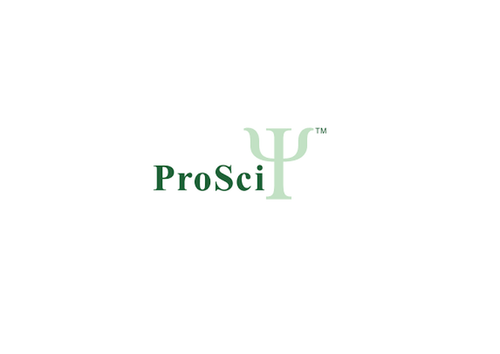Product Description
AATF Antibody | 3039 | ProSci
Host: Rabbit
Reactivity: Human, Mouse
Homology: N/A
Immunogen: AATF antibody was raised against a 12 amino acid synthetic peptide from near the carboxy terminus of human AATF.
The immunogen is located within the last 50 amino acids of AATF.
Research Area: Apoptosis
Tested Application: E, WB, IHC-P, IF
Application: AATF antibody can be used for the detection of AATF by Western blot at 0.5 - 2 μg/mL. Antibody can also be used for immunohistochemistry starting at 10 μg/mL. For immunofluorescence start at 20 μg/mL.
Antibody validated: Western Blot in human samples; Immunohistochemistry in human samples and Immunofluorescence in human samples. All other applications and species not yet tested.
Specificiy: N/A
Positive Control 1: Cat. No. 1308 - Human Small Intestine Tissue Lysate
Positive Control 2: Cat. No. 11-801 - Human Small Intestine Tissue Slide
Positive Control 3: N/A
Positive Control 4: N/A
Positive Control 5: N/A
Positive Control 6: N/A
Molecular Weight: N/A
Validation: N/A
Isoform: N/A
Purification: AATF Antibody is immunoaffinity purified IgG.
Clonality: Polyclonal
Clone: N/A
Isotype: IgG
Conjugate: Unconjugated
Physical State: Liquid
Buffer: AATF Antibody is supplied in PBS containing 0.02% sodium azide.
Concentration: 1 mg/mL
Storage Condition: AATF antibody can be stored at 4˚C for three months and -20˚C, stable for up to one year. As with all antibodies care should be taken to avoid repeated freeze thaw cycles. Antibodies should not be exposed to prolonged high temperatures.
Alternate Name: AATF Antibody: DED, BFR2, CHE1, CHE-1, DED, HSPC277, Protein AATF, Apoptosis-antagonizing transcription factor
User Note: Optimal dilutions for each application to be determined by the researcher.
BACKGROUND: AATF Antibody: AATF (apoptosis antagonizing transcription factor) was initially discovered as an interaction partner of ZIP kinase (ZIPK) , a member of death-associated protein (DAP) kinase family of pro-apoptotic serine/threonine kinases. AATF is a phosphoprotein containing an acidic region and a putative leucine zipper domain and nuclear localization signal, features which are typical of transcription factors. AATF inhibits the ZIPK-mediated pro-apoptotic pathway and may activate other anti-apoptotic pathways. Recently, it has also been shown to protect neural cells against oxidative damage induced by amyloid b-peptide and to inhibit aberrant production of the beta-peptide by interacting with Par-4 (prostate apoptosis response-4) , another pro-apoptotic leucine zipper protein that is associated with neuronal degeneration in Alzheimer's disease (AD) , suggesting that AATF may have potential therapeutic applications in both familial and sporadic forms of AD.
 Euro
Euro
 USD
USD
 British Pound
British Pound
 NULL
NULL
















